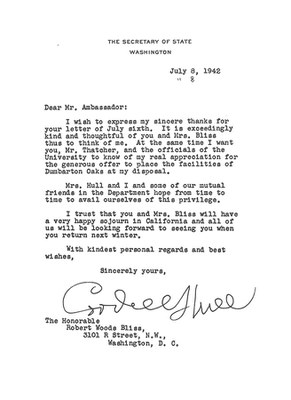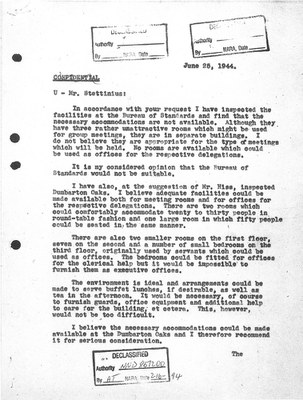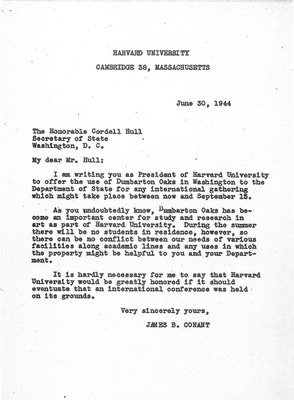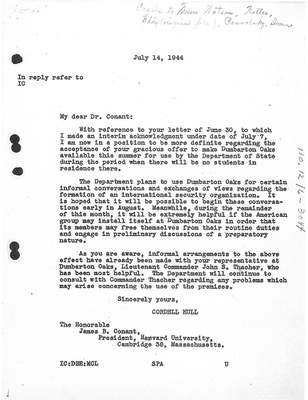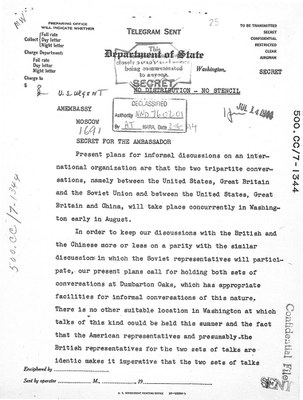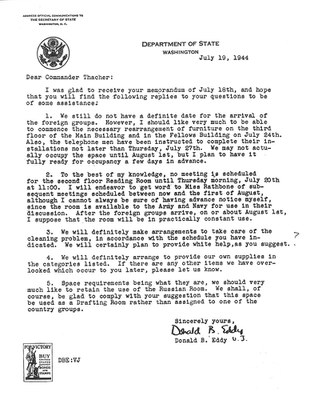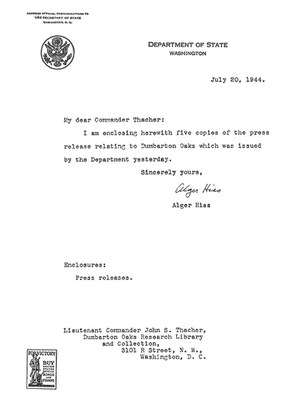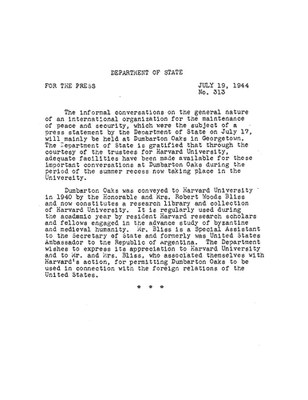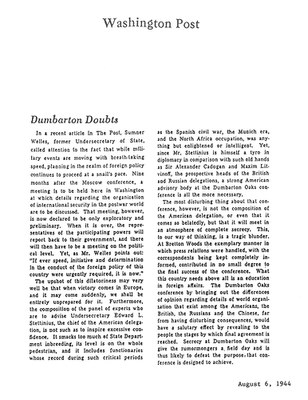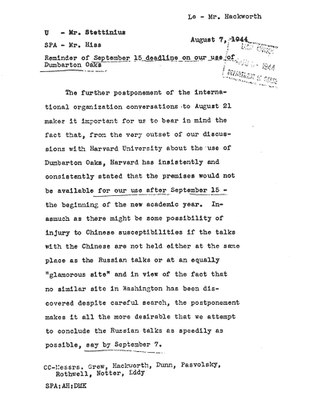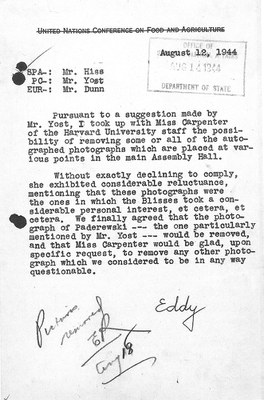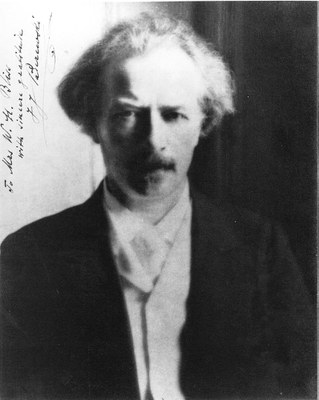The concentrated and systematic preparation for the Dumbarton Oaks Conversations started in December 1943. An “Informal Agenda Group” within the Department of State began on 9 December 1943 with a focus on “international organization discussions.” In June 1944, the group, named the “International Organization Group,” worked out proposals for the Conversations, which were discussed with President Roosevelt, Secretary Hull, American politicians, and legal, military, and other experts. A draft of “Tentative Proposals for a General International Organization,” dated 18 July 1944, was transmitted to the three other major powers. (More information about the series of diplomatic meetings leading to the creation of the United Nations can be found on the United Nations website.)
Robert Woods Bliss (1875–1962), who with his wife, Mildred Barnes Bliss (1879–1969), had given Dumbarton Oaks to Harvard University in 1940 to establish a scholarly research institute and museum in Byzantine studies, was instrumental in arranging these meetings. Already in June 1942, on behalf of the director, John S. Thacher, and the Trustees for Harvard University, he had offered to place the facilities of Dumbarton Oaks at the disposal of Secretary of State Cordell Hull. When the State Department found that Dumbarton Oaks could “comfortably accommodate” the delegates and that “the environment [was] ideal,” the offer was renewed by James B. Conant, the president of Harvard University, in a letter of 30 June 1944. The State Department accepted the offer in large part because the alternative venues had “unattractive” rooms in comparison to the sophisticated interiors of Dumbarton Oaks. Dumbarton Oaks also was situated at the heights of Georgetown, one of the coolest locations in Washington, DC, a major consideration given the hot and humid summer weather and the rarity of air conditioning at the time. The size and layout of the rooms at Dumbarton Oaks were appropriate for seating the number of people and installing offices as necessary, and the estate's relative isolation offered the privacy and security needed for these unofficial talks.
In order to host the discussions and make visiting delegates feel comfortable, the Main House at Dumbarton Oaks had to undergo some minor adjustments. During the course of the conversations, the Music Room was temporarily renamed the Assembly Room, the Orangery served as a cafeteria for buffet luncheons, and a signed photograph of Polish pianist Ignace Jan Paderewski, which sat atop the Steinway concert grand piano, was removed for fear that it would ignite conflict with the Soviets.
Documents and Photographs


